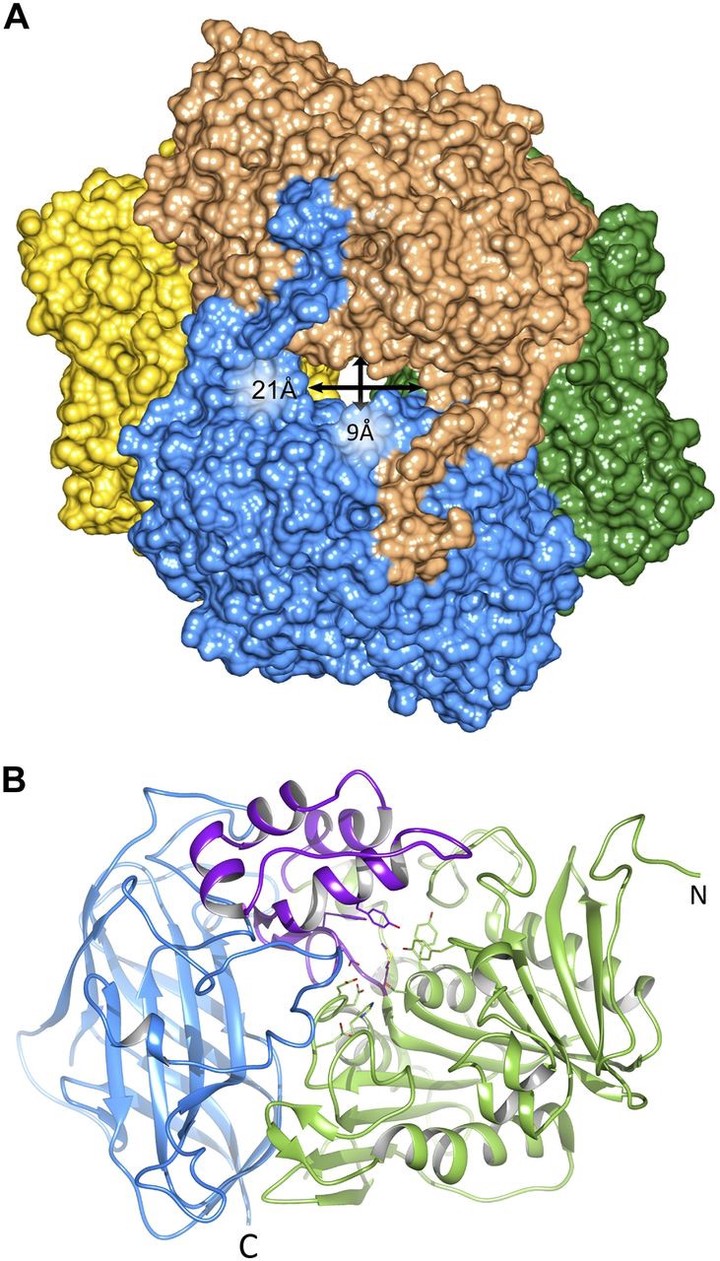 Structure of Bathyaminopeptidase (BAP), a peptidase from an uncultured sedimentary archaeon.
Structure of Bathyaminopeptidase (BAP), a peptidase from an uncultured sedimentary archaeon.
Abstract
Marine sediments host a large population of diverse, heterotrophic, uncultured microorganisms with unknown physiologies that control carbon flow through organic matter decomposition. Recently, single-cell genomics uncovered new key players in these processes, such as the miscellaneous crenarchaeotal group. These widespread archaea encode putative intra- and extracellular proteases for the degradation of detrital proteins present in sediments. Here, we show that one of these enzymes is a self-compartmentalizing tetrameric aminopeptidase with a preference for cysteine and hydrophobic residues at the N terminus of the hydrolyzed peptide. The ability to perform detailed characterizations of enzymes from native subsurface microorganisms, without requiring that those organisms first be grown in pure culture, holds great promise for understanding key carbon transformations in the environment as well as identifying new enzymes for biomedical and biotechnological applications.